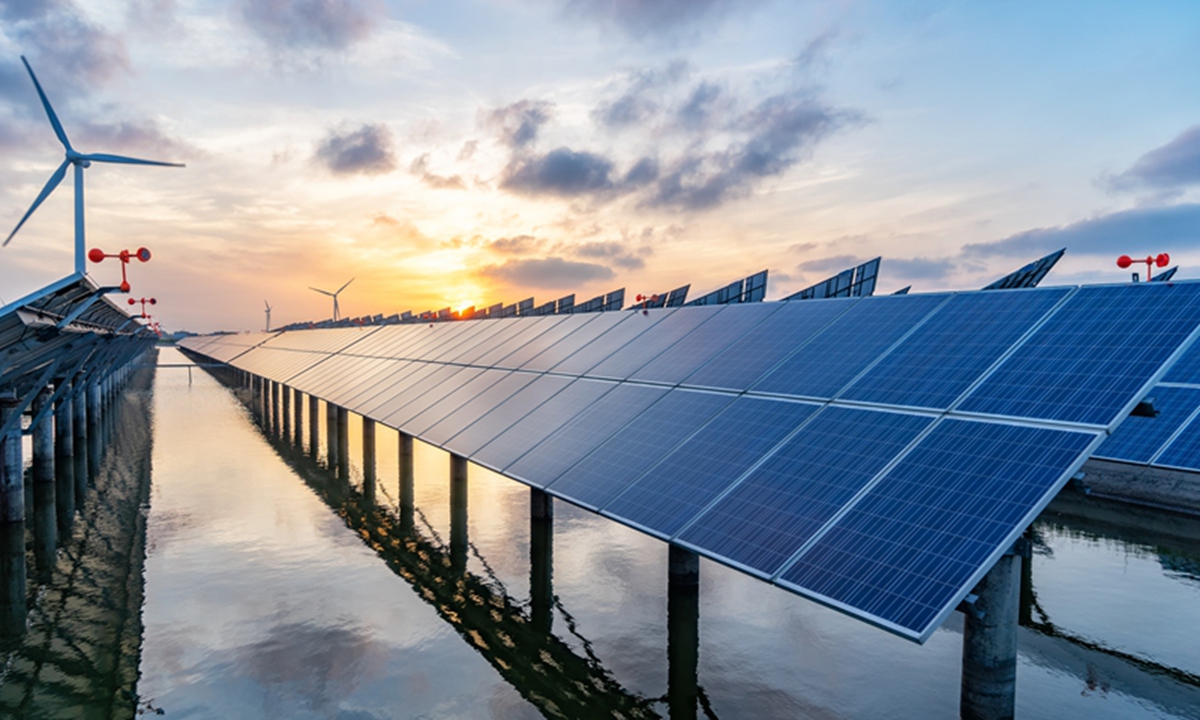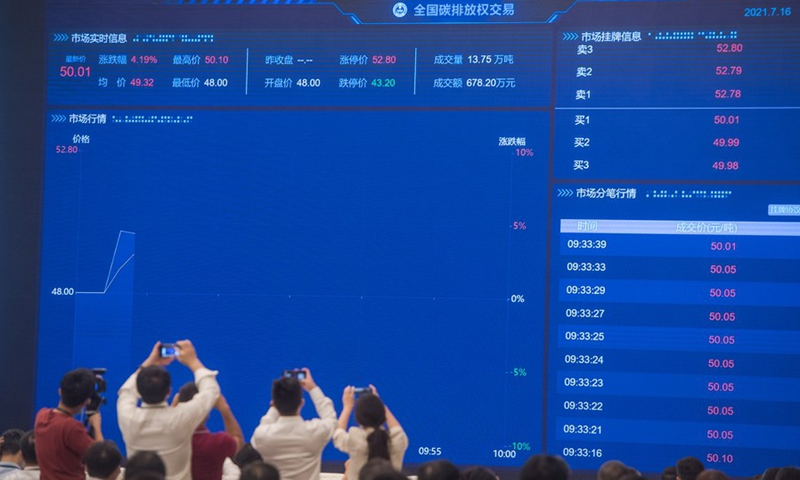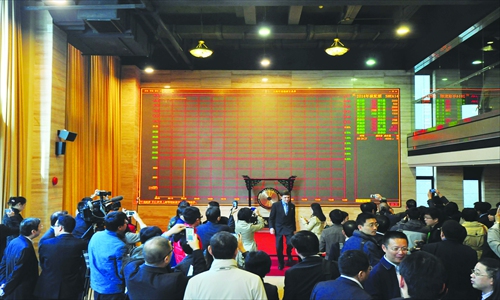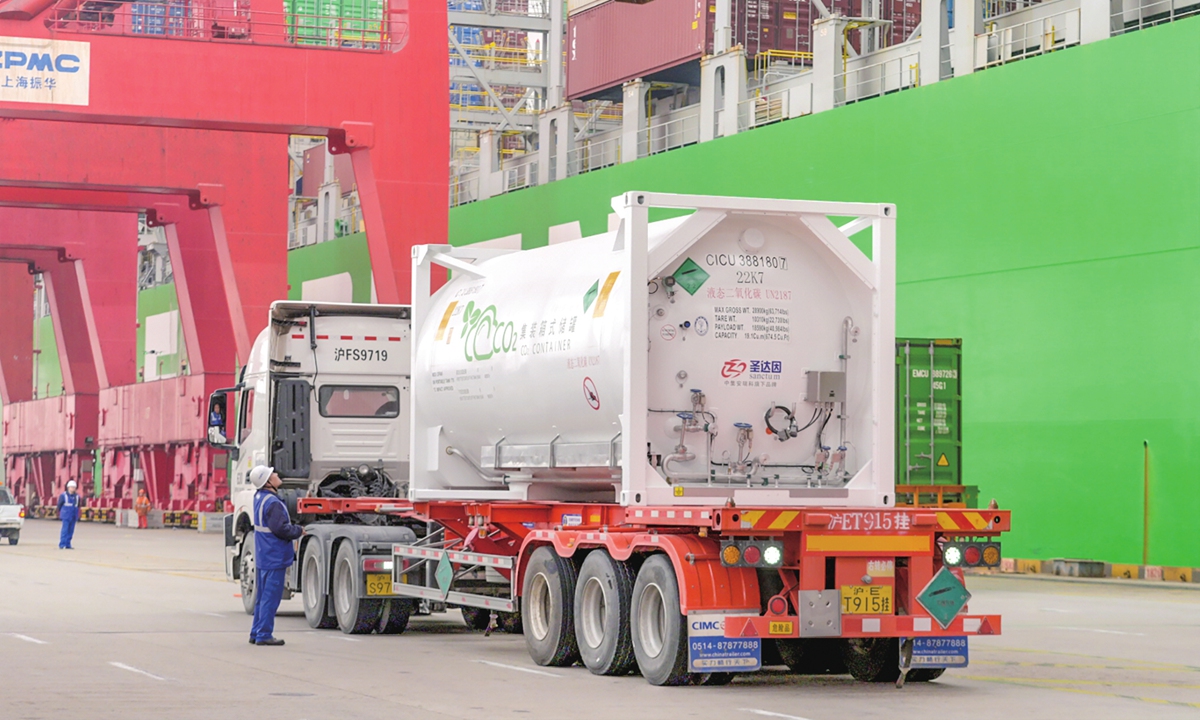China issues plan to strengthen standardization for dual carbon goals
Move to help China's green industries win more international market share

Photovoltaic panels in Sihong, East China's Jiangsu Province Photo: VCG
Three Chinese ministries published a plan on Thursday to systematically strengthen the standardization and measurement systems used to gauge the country's efforts to realize "dual carbon" goals, a move that analysts said could help the country's industrial products gain a firmer foothold amid rising risks of hidden trade barriers in some major markets.
The National Development and Reform Commission (NDRC), State Administration for Market Regulation, and Ministry of Ecology and Environment published an action plan for the strengthening of carbon peak and carbon neutrality standards and measurement systems for this year and next year, according to a circular published on the website of the top economic planner NDRC on Thursday.
The plan calls for essentially establishing a unified carbon emissions accounting and evaluation standard system targeting enterprises, projects and products by 2025, as well as the establishment of carbon emission management standardization pilot projects in 100 enterprises and industrial parks.
By 2025, technical indicators for energy consumption and efficiency at key industries and products will have basically reached an internationally advanced level, according to the circular.
Chinese analysts and industry insiders said that the plan is an indication of China's steadfast efforts in pursuing green development according to its dual carbon goals, and they pointed out that the new policy is aligned with the needs of industrial transformation and high-quality development.
China would reach its carbon emissions peak before 2030 and become carbon neutral before 2060, according to the Xinhua News Agency.
Despite a tendency by some countries to rewind their pledges on emission reductions in recent years, China still has to face the issue of carbon emission reductions squarely, as the world's largest manufacturing powerhouse is still on a rising track before its emissions will peak, experts said.
Lu Jinbiao, an industry expert with the expert committee of the China Photovoltaic Industry Association, told the Global Times on Thursday that the plan will give China more discourse power in the field of product carbon emission standards and alleviate the situation in which technologically leading, energy-efficient made-in-China products are not recognized globally for their low carbon status.
"It will help China's green industries win more international market share and better serve the global cause of reducing carbon emissions," Lu said.
In order to better join and even play a leading role in the international green economy certification and standards system, China must painstakingly improve its domestic standards and measurement systems in carbon emissions to bridge the gap with leading international practices, Hu Qimu, deputy secretary-general of the Digital-Real Economies Integration Forum 50, told the Global Times on Thursday.
"To have internationally recognized standards certifying that China's products are up to high carbon emission standards has a special significance, given that some markets are erecting new trade barriers created under the ostensible goal of seeking to lower carbon emissions," Hu said.
The plan published on Thursday, which identified 16 specific tasks, called for efforts be intensified to build the foundation of carbon measurement capabilities, improve the carbon measurement system and enhance the level of carbon measurement service support.
In particular, the plan called for accelerating the development of national standards for the carbon footprints of new-energy vehicles, photovoltaic (PV) systems and lithium batteries to offer new advantages in exports.
It requires revising and improving energy consumption quota standards for key industries such as steel, oil refining, coal-fired power generation units, pulp and papermaking, industrial caustic soda, and rare-earth smelting, to comprehensively enhance energy efficiency levels to an "internationally advanced" standard.
Chinese analysts stressed the whole-of-supply-chain approach of the new policy, noting that reducing the carbon footprints of upstream industries will increase the competitiveness of end products destined for overseas markets.
The plan also covers the country's ongoing digitalization process. It listed products such as high-voltage motors and servers under the national energy efficiency labeling management system and called for researching and introducing detailed implementation guidelines for energy efficiency labeling for data centers.
China's solar energy giant LONGi said the plan, which calls for speeding up research into carbon footprint national standards, will promote the green transition of the entire solar industry supply chain by providing clearer quantitative standards and evaluation systems for the green and low-carbon development of the PV industry.
As the international community continues to pay more attention to reducing carbon emissions, strengthening measurement standards will help Chinese PV companies better integrate into the global green value chain, the company said in a statement sent to the Global Times on Thursday.
On August 2, the General Office of the State Council published a work plan, stating the country will incorporate carbon emissions targets into its national economic and social development agenda.
The plan called for improving the country's capacities in statistics and accounting and the monitoring and measurement of carbon emissions by 2025, and it also said that China will establish mechanisms focusing on curbing the intensity of carbon emissions during the 15th Five-Year Plan period (2026-30).




